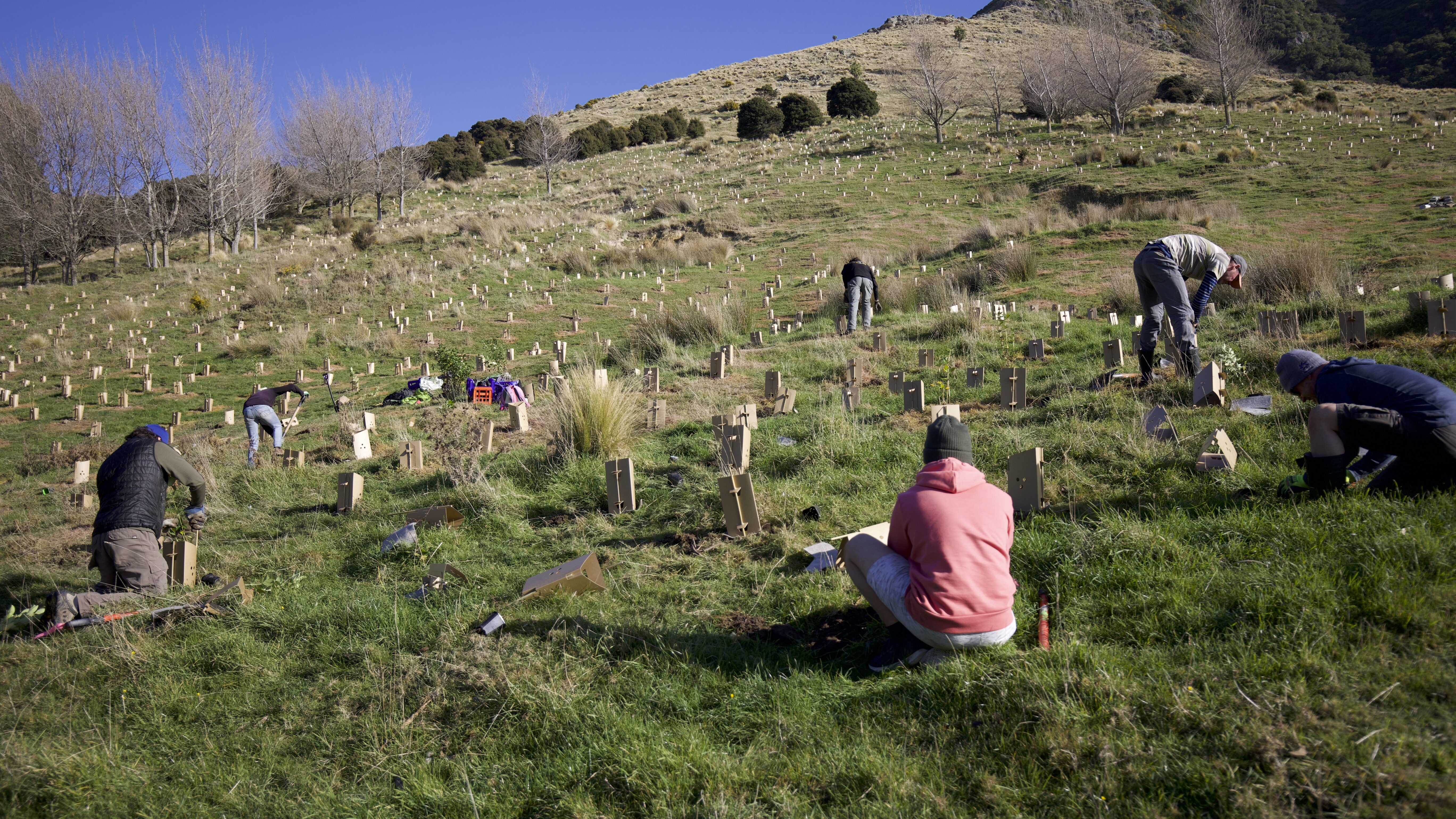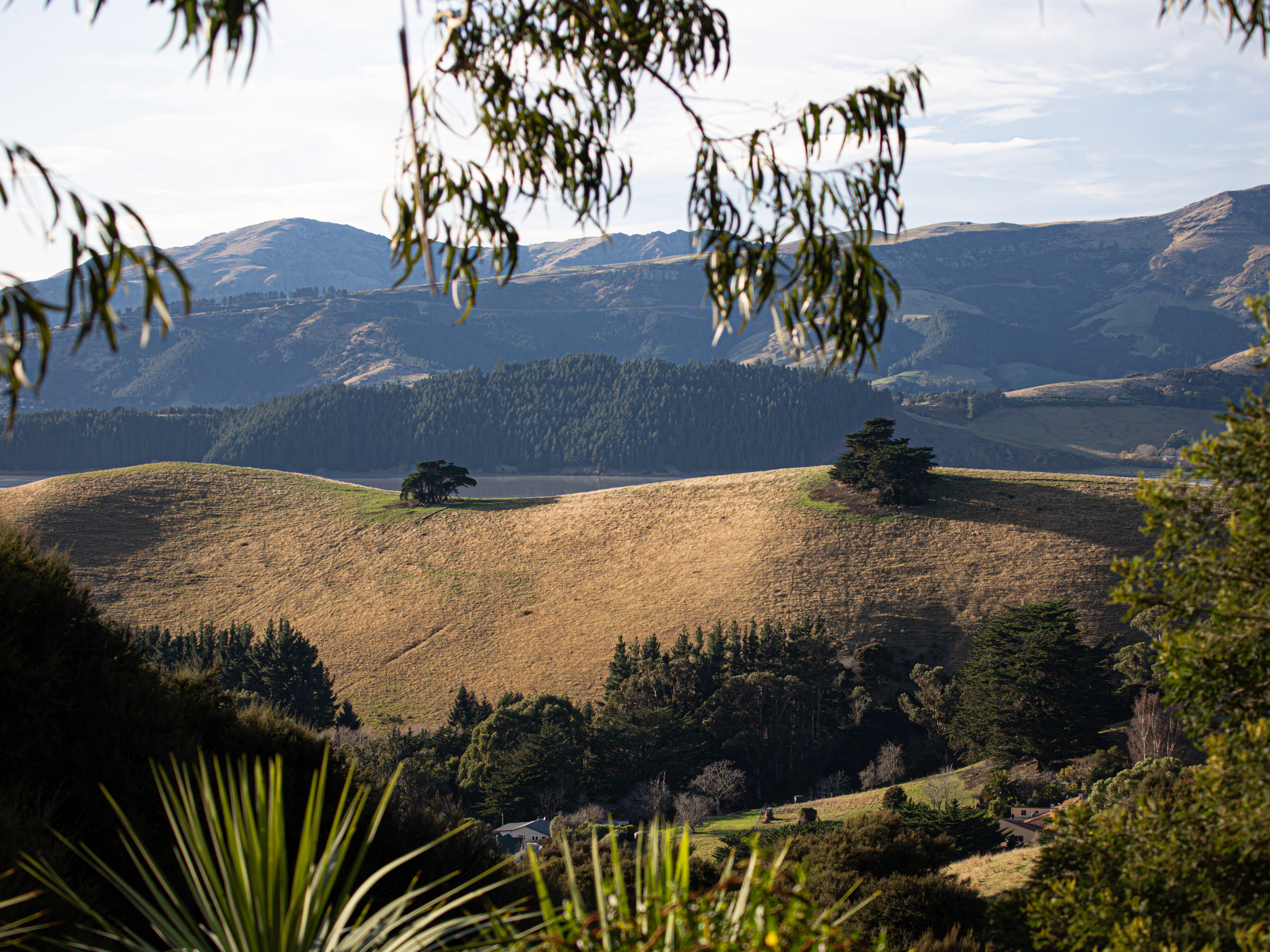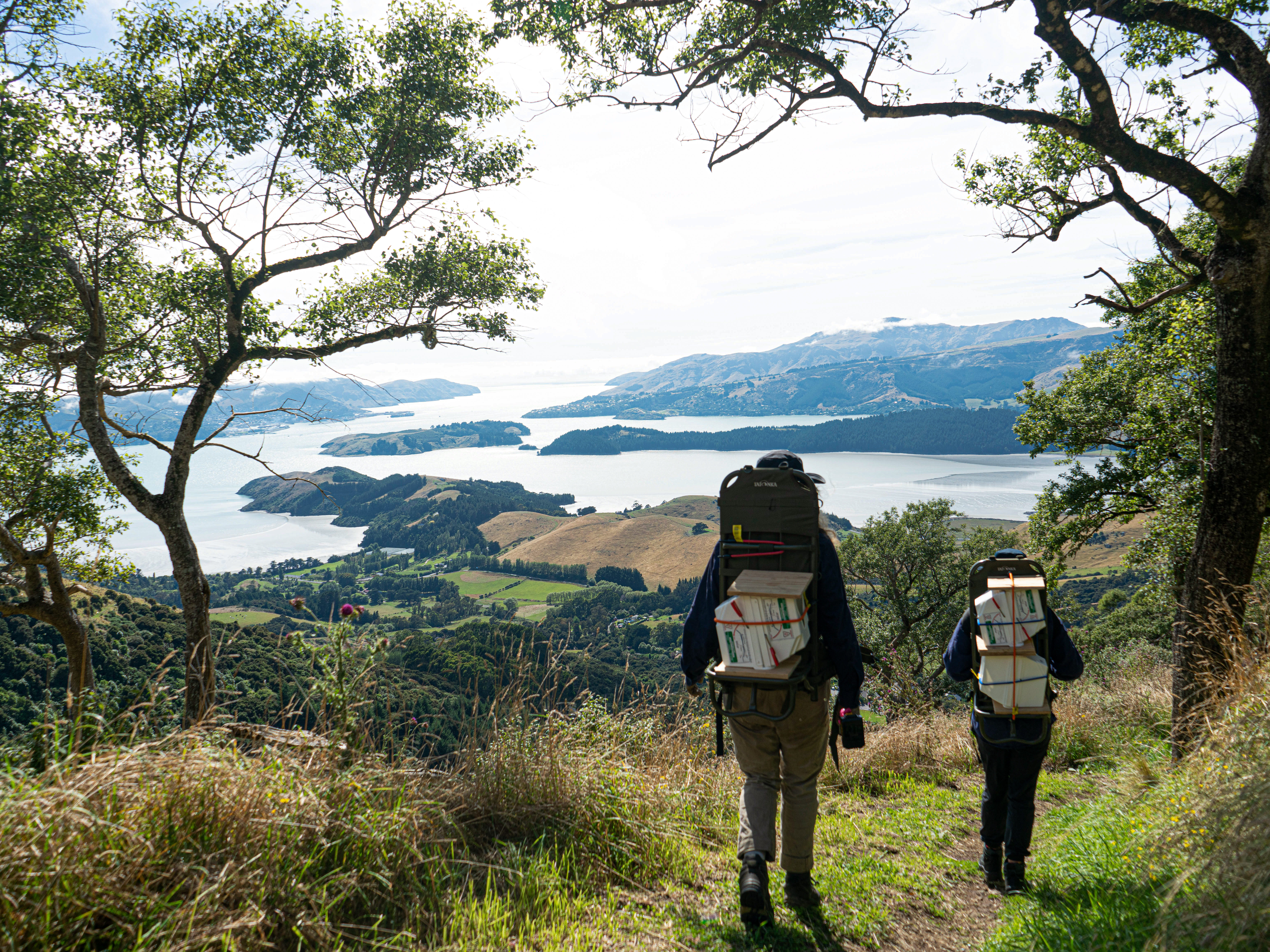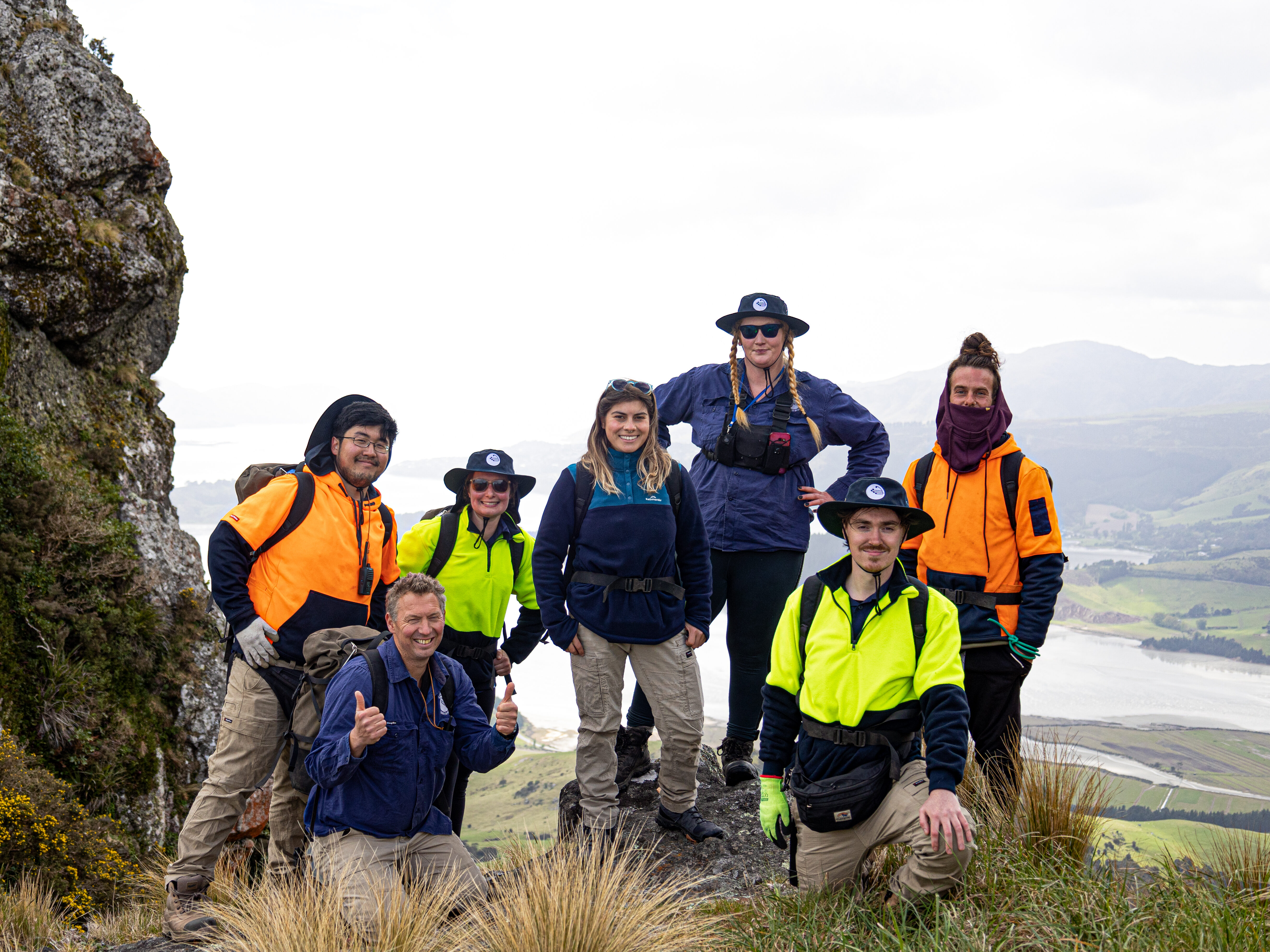Winter is the ideal time for planting native plants, as the cold temperatures and rainfall help trees and shrubs get a chance to settle in before the dry heat of summer. But, young, fresh seedlings are like a lolly scramble for rabbits, hares and possums. So, what can you do to protect your plants?

Mind your Ps
Let Kaimahi for Nature Whakaraupō, a restoration project in Lyttelton Harbour, show you how to protect your precious plants.
To plan and prepare the sites they work on, project coordinator Anna Colombus says they ecosource their seeds. This means they only plant trees, shrubs and grasses native to the area.
“You know the plants are adapted to the local conditions, which gives them the best chance in life,” she says. “The strongest seed will produce the strongest trees.”
The Kaimahi project operates two field teams at Rāpaki and Living Springs. Living Springs is lucky to have some giants on their property – there’s an 800-year-old kahikatea and some equally ancient tōtara that produce great seed.
To protect the waterways and planting sites, they’ve built 8 km of new fences.

“Livestock will not only browse the new seedlings, but they can make the land more prone to slipping or erosion,” Anna says. Fencing allows plants to take root and stabilise the steep hillsides, stopping sedimentation problems downstream.
Livestock aren’t alone in their love of fresh seedlings – goats, deer, pigs, possums, hares and rabbits all love to chow down on the plants too.
“The big thing for us,” Anna says, “is to protect the plants from grazing for those first couple of years until they can get properly established.”
Rabbits and hares are a particular problem because they love the open fields where the plantings are happening. Anna says that hares and rabbits don’t like forests and will strategically nip back the plants so the trees can’t get established.
To thwart the hares, they protect young seedlings with guards made from cardboard. The guards are tough enough to stop the browsers, but they’re compostable at the end of their use.
Traps for the future

Restoration planting also needs to be supported by trapping – not just to stop the plants from being nibbled to death but to safeguard the future of the forest. The end goal is a humming ecosystem full of all the native bird, lizard and bug species that once thrived in Whakaraupō.
“We’re planting for the future,” Anna says, “and setting up robust trapping networks now will make the ecosystem more attractive to returning species.”
The Kaimahi crew has set up an extensive trapping network. Team leader Grant Whitehead says they now have traps and monitoring in place in all of Livings Springs’ main valleys, controlling more than 300 hectares for possums, rats, mustelids and feral cats.
As well as all the traps and lures, “we’ve got cameras all over the show,” he says.
“They give great intel and show us where the hotspots are.”
Unless your restoration project is an island, it will have shared boundaries with neighbouring properties. To protect the gains they’ve made, Grant says they work closely with local landowners.
“Collaboration is key if you want to keep on top of reinvasions,” he says.
They work with the local council, the Summit Road Society and private landowners to ensure they stay on top of border breaches.
Healing the harbour
Since 2021, Kaimahi for Nature Whakaraupō has been hard at work restoring Whakaraupō Lyttelton Harbour. The project is a partnership between Te Hapū o Ngāti Wheke, Living Springs and Conservation Volunteers New Zealand (CVNZ) and is funded by the Department of Conservation (DOC). Led by Ngāti Wheke, mātauranga Māori guides the kaupapa, and the project’s long-term vision is to restore mahinga kai in the harbour.
The Kaimahi project operates two field teams at Rāpaki and Living Springs. They head out in all weather and spend their days planting native trees, shrubs and grasses, running traplines and monitoring for introduced predators.

They also help with fencing, weeding and track maintenance. Over the last two winters, the teams have planted more than 40,000 native seedlings, built and maintained more than 11 km of fencing, and trapped more than 2500 possums, rats and mustelids.
Keen to lend a hand?
This whakataukī inspires the Kaimahi for Nature Whakaraupō project – he rau ringa e oti ai (many hands make light work). The current funding runs out in 2024, but the team are exploring ways to keep the project running.
They’re especially keen to hear from locals who might like to volunteer with trapping, planting and building tracks at Living Springs. If this sounds like you, contact [email protected].

